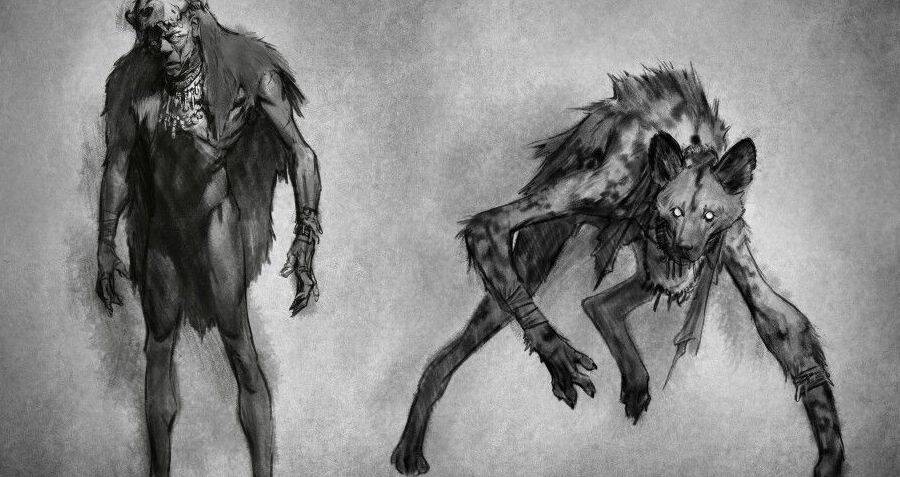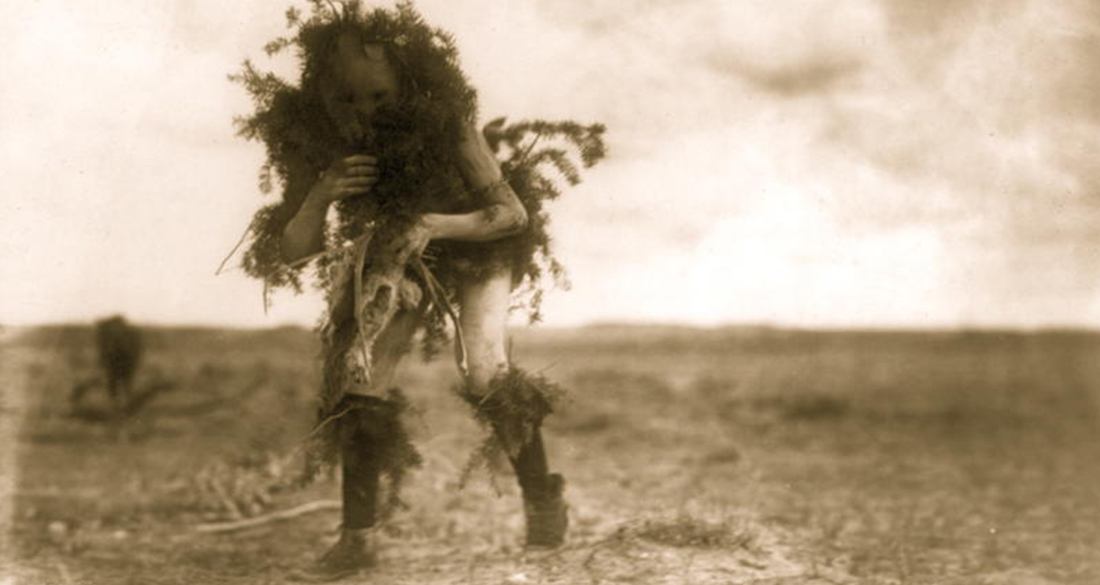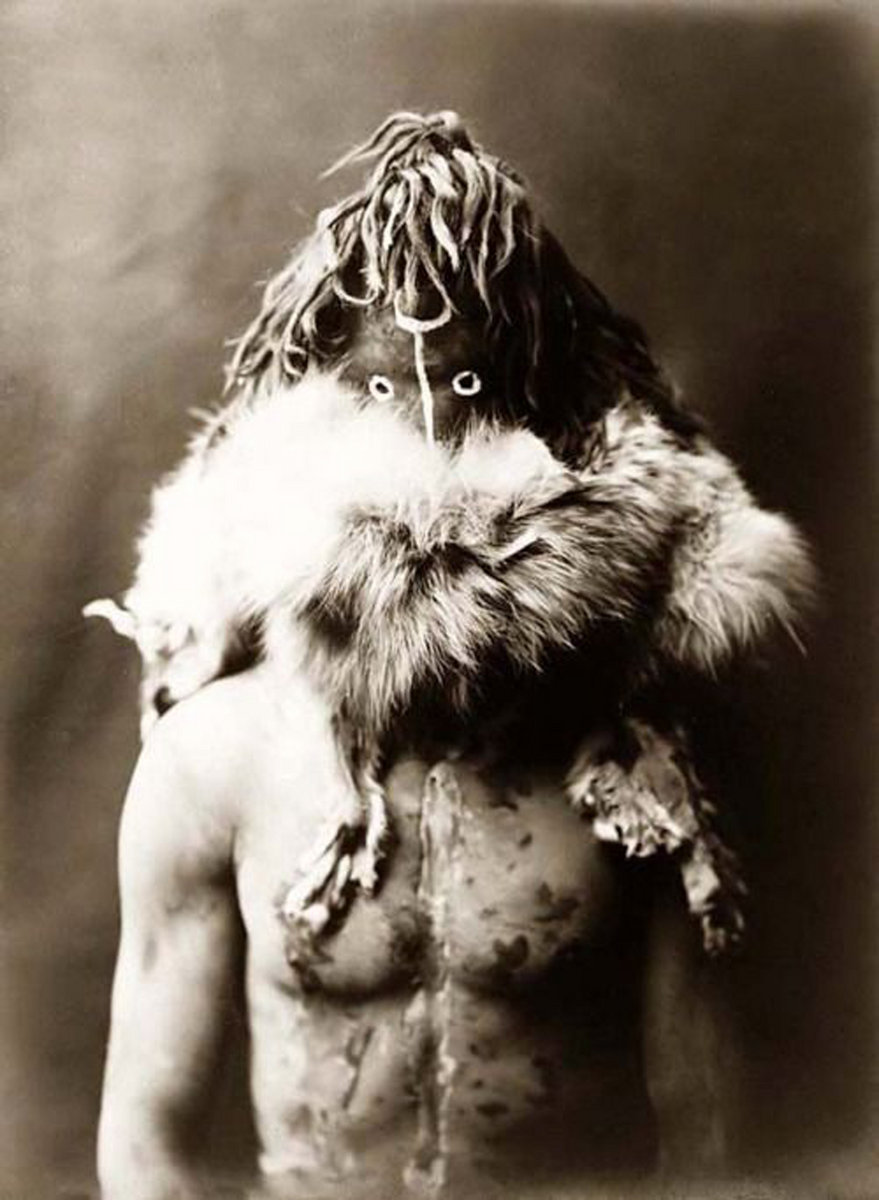
Shadows on the Horizon: Unveiling the Enduring Terror of the Navajo Skinwalker
Beyond the picturesque mesas and the vast, silent expanse of the American Southwest lies a shadow that stretches back through generations, a chilling whisper carried on the desert wind. For the Diné, the Navajo people, this shadow has a name – Yee Naaldlooshii – more commonly known in English as the Skinwalker. It is a legend that transcends mere folklore, embodying a profound and visceral fear, a cautionary tale woven into the very fabric of their cultural identity.
To the uninitiated, the Skinwalker might sound like a supernatural creature from a horror film, a shape-shifting monster designed to thrill and terrify. But for the Navajo, the Skinwalker is far more real, far more insidious, and far more terrifying because it is not an external demon, but a perversion of humanity itself. It is a witch, a malevolent being who has forsaken their own humanity to gain dark powers, capable of transforming into animals, inflicting sickness, and causing death.
The concept of the Skinwalker is deeply rooted in Navajo traditional beliefs, particularly their understanding of witchcraft and the delicate balance of the natural world. While many Navajo ceremonies are dedicated to restoring balance and harmony – what they call Hózhó, a state of beauty, order, and well-being – Skinwalkers embody the very antithesis. They are practitioners of Hóchxǫ́, the dark side of spiritual power, deliberately using sacred knowledge to cause harm rather than to heal.

The Perversion of Power: How a Skinwalker is Made
The transformation into a Skinwalker is not accidental; it is a conscious, horrifying choice. According to Navajo belief, a person becomes a Skinwalker by committing the ultimate taboo: killing a close family member. This act of profound evil, a deliberate severing of the most sacred bonds, is said to unlock the darkest of powers, allowing the individual to shed their humanity and embrace the path of the witch. It is a spiritual corruption so deep that it irrevocably twists the soul.
Once transformed, a Skinwalker is believed to gain the ability to assume the form of various animals, most commonly those associated with cunning, predation, or ill omens – coyotes, wolves, owls, foxes, or even bears. The horrifying aspect is not merely the shape-shifting, but the manner in which it is done. They are said to literally wear the skins of these animals, a grotesque mockery of the natural order. Imagine the rustle of a human walking through the night, then the sudden, unnatural loping of a coyote, its eyes reflecting a knowing, malevolent intelligence. This image is enough to send shivers down the spine of any Navajo who has grown up hearing the warnings.
Motives and Manifestations: The Work of Darkness
Why would someone choose such a path? The motivations attributed to Skinwalkers are rooted in the darkest aspects of human nature: envy, greed, revenge, and a desire for control. They are believed to inflict illness, cause accidents, bring bad luck, or even orchestrate deaths. They might steal belongings, disrupt sacred ceremonies, or simply terrorize individuals or communities.
Encounters with Skinwalkers are rarely direct confrontations. Instead, they manifest through subtle, unsettling signs that escalate fear and suspicion. Stories abound of strange animal behavior: a coyote standing on its hind legs in the distance, an owl hooting directly outside a window for an extended period, or the sound of footsteps on a roof where no one should be. Lights appearing and disappearing inexplicably in the desert night, peculiar knocking sounds, or a voice calling a person’s name from the darkness are all considered potential signs of a Skinwalker’s presence.
One common tale describes a Skinwalker attempting to lure a person out of their home by imitating the voice of a loved one or by making strange noises. "My grandmother always told us," shares a fictionalized but representative elder, "never to answer a knock late at night if you don’t recognize the voice, and never to follow a strange light in the desert. Some things are not what they seem, and they prey on your fear, on your kindness."
The terror of the Skinwalker is amplified by their perceived ability to influence thoughts and actions. They are said to use "corpse dust" or other malevolent substances to poison people, or to use dark magic to invade dreams, causing nightmares and mental distress. This psychological warfare is often more potent than any physical threat, eroding a person’s sense of safety and well-being.

The Taboo and the Power of Belief
For the Navajo, speaking openly about Skinwalkers is a profound taboo. The very act of naming them, or discussing their activities in detail, is believed to draw their attention, putting the speaker and their family at risk. This cultural silence, while seemingly counterintuitive to understanding, is a testament to the depth of the fear and respect (or rather, dread) they command. It adds to their mystique, transforming them from mere monsters into an unseen, omnipresent threat that lurks at the fringes of perception.
This taboo also makes it incredibly difficult for outsiders to grasp the gravity of the belief. What might be dismissed as superstition by a secularized, Western mind is a tangible, ever-present reality for many Navajo. The fear is not irrational; it is a deeply ingrained cultural response to a perceived malevolent force.
The belief in Skinwalkers also serves a powerful social function. It acts as a moral compass, reinforcing community values and discouraging behavior that deviates from the Diné way. The threat of a Skinwalker, or the suspicion of being one, can be a powerful deterrent against selfish acts, greed, or the abuse of power. It reminds individuals that their actions have consequences, not just for themselves, but for the entire community, and that there are forces, both seen and unseen, that uphold justice.
Protection and Resilience: Fighting the Darkness
Despite the overwhelming fear, the Navajo are not without defenses. Protection against Skinwalkers is not found in silver bullets or crucifixes, but in traditional spiritual practices and a strong connection to one’s culture and community. Prayers, ceremonies performed by medicine people (Hataałii), and the use of sacred substances like juniper ash or salt are believed to ward off these malevolent entities. The ash, for instance, is often sprinkled around homes or on individuals as a protective barrier.
Maintaining a strong sense of Hózhó – living in balance and harmony – is considered the ultimate defense. A person who lives a righteous life, respects their elders, and participates in their community is thought to be less vulnerable to the influence of Skinwalkers. The power of family, community solidarity, and adherence to traditional teachings are vital bulwarks against the encroaching darkness.
Modernity and Misunderstanding: Bridging the Cultural Divide
In an increasingly secular world, the concept of the Skinwalker might be dismissed by some as mere superstition or a remnant of a bygone era. Yet, for many Navajo, the belief remains potent and deeply personal, intertwined with identity, history, and the very fabric of their moral universe. It represents the ultimate struggle between good and evil, a battle fought not just in the physical realm, but within the human spirit.
For outsiders, approaching the topic of Skinwalkers requires immense respect and cultural sensitivity. Sensationalizing these beliefs for entertainment, or treating them as mere campfire stories, is deeply disrespectful to the Navajo people and trivializes a profound aspect of their spiritual heritage. It’s crucial to understand that while a journalist might explore the cultural phenomenon of the Skinwalker belief, they must do so from a place of reporting on the belief system, rather than endorsing the literal existence of the entities.
The enduring terror of the Skinwalker underscores the power of cultural narratives to shape perception, enforce social norms, and articulate humanity’s deepest fears. Whether viewed as literal entities or powerful cultural metaphors for the darkest aspects of human nature, the Skinwalker remains a chilling and vital part of the Navajo cultural landscape, a constant reminder of the shadows that can lurk on the horizon, and within the human heart. Their whispers continue to resonate across the vast and ancient lands, a testament to a fear that refuses to be extinguished.


